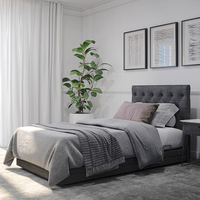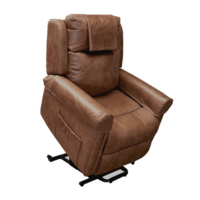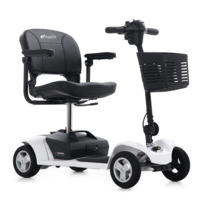Living with rheumatoid arthritis: Anuradha Sawhney’s lessons on parenting, pain and persistence

Rheumatoid arthritis is a chronic autoimmune disease that causes pain and swelling of the joints.
Around 1 in 50 people in Australia have rheumatoid arthritis and it affects women more than men.
We spoke with Anuradha Sawhney, who has had rheumatoid arthritis since 2007, about her challenges, treatments and the different ways she has managed her arthritis. Anu runs her own jewellery business and also works as a Digital Marketing Manager with Arthritis Australia, the peak body in Australia for arthritis research and support.
You were diagnosed with arthritis in 2007. What has been your experience and what have you done to manage it over the years?
For many years, I didn’t have a rheumatologist. Instead, I worked on controlling my arthritis with diet and exercise, along with an Ayurvedic cleanse in India once a year. And for a while that was enough to manage my arthritis.
Then in 2014 I had my daughter, via IVF, which triggered a whole bunch of different things that affected my mobility and left me quite sick. Within six months of having my daughter, I went from being able to walk uphill, swim and do Pilates, to struggling to walk the distance from my chair to the toilet – even with walking aids.
That would have been so tough. How did that affect your experience as a parent in those early months and years?
I didn’t get to play with my daughter in playgrounds when she was small, because I really couldn’t be that active. So I used to read with her a lot and sing. But it was really only activities that were quite sedentary.
In 2015, when she was around 18 months old, I had a bilateral hip replacement, followed by a knee replacement six months later, which was an incredibly intense period. After that I was able to walk, drive and generally be more mobile. But it did mean, for those first two years, there was no aspect of parenting that I would classify as just being a parent.
When I had my son three years ago, it was different. I was much more aware of what was going on in my body. I had learned to identify the difference between muscle pain and arthritic pain. Knowing I was experiencing flare ups, I went to my rheumatologist and told him I wasn’t managing and that I needed arthritis medicine. It took a few weeks to settle into that and work out the right dose, but it worked to take away the pain. And that meant my experience of parenting my son was so much different – we were able to go to the playground and do more physical activities.
What about now? How is your mobility following your surgery and with medication?
In terms of mobility, there are some things that I can't, or won’t, do – like sit on the floor. That’s just me being cautious about the knee that wasn’t replaced, and just not wanting to do anything to potentially get it out of joint.
The other thing I avoid is gym classes. I used to do Pilates, but I’ve really found now that there aren’t classes that cater to people with arthritis. So it’s a case of trying to manage some sort of physical exercise on a regular basis. All while taking care of kids, running a business, working a job and doing life – it’s not easy.
How has having the right care team made a difference?
Something that I’ve learned through this process is to have people beside you who will listen to you. Not just to pay attention to what the blood reports are saying. But also to ask how you feel.
My first rheumatologist really respected the fact I didn’t want to take any medicines at that time. But likewise, my current rheumatologist is the one who encouraged me more towards certain medications because I really needed them.
You run your own jewellery business, Bidillia. How has your experience of having arthritis played into that?
Comfort is a big thing. When you’re dealing with arthritis, the last thing you want is to feel uncomfortable. So I want to make sure what I make is comfortable enough to wear all day. The rings are all adjustable, which means even when you have some swelling, you can still wear your nice jewellery.
Perhaps the biggest thing for me, in terms of my arthritis, is that my business is actually a respite some days. If there are no sales happening, there’s things I can do to change that. So it becomes the thing I can control when there is so much I can’t control – from my arthritis, my kids, even the weather.
You're currently working with Arthritis Australia as a digital marketer. What led you to that and how has your experience with arthritis helped?
I joined for vested interests. I used to be the person who’d find out about studies and research after it was done. Now I know when there is going to be research in a particular area.
Having arthritis has been good in terms of my communications role in that I’m the person reminding the team about the people who are going to be accessing the information that comes [from Arthritis Australia]. So the information that’s put out has to be consumer centric, easy to read and make sense of. For me, I’m on the inside trying to do better by other people with arthritis.
You've gone through a lot in terms of getting to where you are in terms of having surgery, finding the right treatment and experiencing the ups and downs of life. What’s your attitude towards your arthritis now?
The one takeaway I have is that, when it comes to arthritis, you have to work towards benefiting yourself.
There’s really something to be said about understanding what's going on with your body and why it behaves the way it behaves. What causes the little aches and pains – whether that’s arthritis or just trying to do too much. It means, if I’m having a day when my hands are hurting I'm not going to be on my laptop. Or knowing that if I’ve had too much caffeine and not enough water, that’s going to affect my joints and what can I do to mitigate that.
Click here to view Mobility HQ's range of Arthritis Products



























